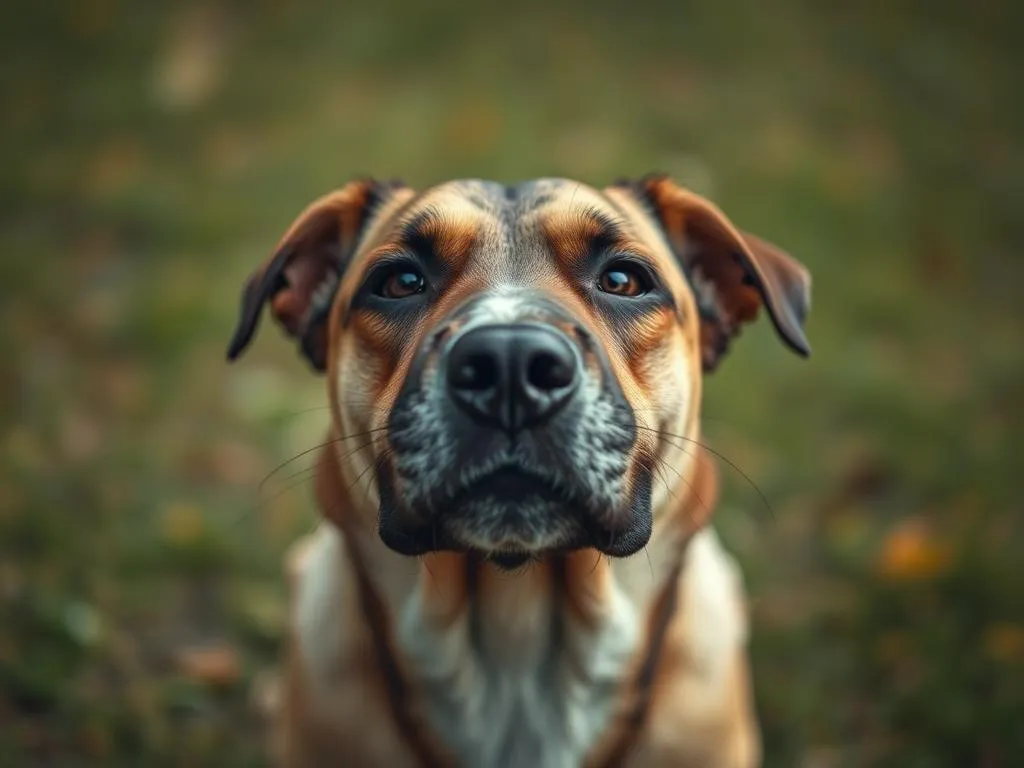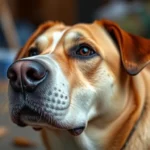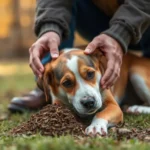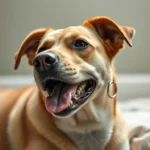
Introduction
Reverse sneezing in dogs is a phenomenon that often puzzles dog owners. It can sound alarming, but understanding what it is and why it happens can help ease concerns. This article will explore the definition of reverse sneezing, its causes, symptoms, and management strategies, providing dog owners with the knowledge they need to support their furry friends through these episodes.
What is Reverse Sneezing?
Definition and Explanation
Reverse sneezing is a respiratory event where a dog rapidly pulls air into its nose, causing a unique sound that can resemble a honking or gagging noise. This occurs when the dog experiences irritation or stimulation in its throat or nasal passages. Unlike regular sneezing, which expels air forcefully from the nose, reverse sneezing draws air in, making it sound quite different. It’s important to note that this is a benign reflex and does not typically indicate a serious health issue.
Common Causes
Several factors can trigger reverse sneezing in dogs:
-
Allergens: Common allergens such as pollen, dust, and mold can irritate a dog’s nasal passages, leading to reverse sneezing.
-
Irritants: Strong odors from household cleaners, smoke, or perfumes can provoke this reflex.
-
Excitement or Exercise: Increased excitement or physical activity can lead to rapid breathing, which may trigger reverse sneezing.
-
Other Health Conditions: In some cases, underlying health issues like nasal mites, respiratory infections, or anatomical abnormalities can contribute to frequent reverse sneezing.
Recognizing Reverse Sneezing in Dogs
Symptoms to Look For
When observing your dog, you may notice specific signs indicative of reverse sneezing:
-
Unique Sounds: The hallmark sound of reverse sneezing is a series of rapid inhalations that can resemble a honking or snorting sound.
-
Visual Signs: Dogs may exhibit certain postures during reverse sneezing, such as extending their necks, standing still, and appearing slightly panicked. Their mouths may be open, and their eyes might widen.
Differentiating from Other Respiratory Issues
It’s essential to distinguish reverse sneezing from other respiratory conditions. Symptoms of kennel cough, allergies, or infections may include:
- Persistent coughing
- Nasal discharge
- Lethargy or loss of appetite
If your dog exhibits these symptoms along with reverse sneezing, it’s advisable to consult a veterinarian to rule out more serious conditions.
Why Does Reverse Sneezing Occur?
Anatomy of the Dog’s Airway
To understand reverse sneezing, it’s helpful to know a bit about a dog’s airway anatomy. Dogs have long nasal passages that can easily become irritated. The soft palate, located at the back of the throat, plays a crucial role in the reverse sneezing reflex. When it becomes irritated, it can trigger this behavior as the dog attempts to clear the irritation.
Triggers and Risk Factors
Certain breeds are more prone to reverse sneezing due to their anatomical structure. Breeds with short muzzles, such as Bulldogs, Pugs, and Boxers, often experience this more frequently. Environmental factors, such as exposure to allergens or irritants, can also increase the likelihood of reverse sneezing episodes.
What to Do When Your Dog Reverse Sneezes
Immediate Response
When you notice your dog reverse sneezing, it’s important to remain calm. Here are steps to take:
-
Stay Calm: Your calm demeanor can help reduce any anxiety your dog may feel.
-
Gently Massage: You can gently massage your dog’s throat or gently pinch their nostrils shut momentarily. This can help them swallow and potentially alleviate the irritation.
-
Encourage Calmness: Speak softly to your dog and reassure them, helping to reduce anxiety during the episode.
When to Seek Veterinary Care
If reverse sneezing is frequent or accompanied by other concerning symptoms, it’s crucial to seek veterinary care. Signs that indicate a veterinary visit may be necessary include:
- Frequent episodes of reverse sneezing
- Nasal discharge or coughing
- Lethargy or changes in appetite
- Difficulty breathing or persistent panting
Keeping a record of your dog’s reverse sneezing episodes can provide valuable information to your veterinarian.
Treatment and Management
Home Remedies
There are several natural ways to manage reverse sneezing in dogs at home:
-
Humidifiers: Keeping the air moist can help alleviate irritation in the nasal passages.
-
Reduce Allergens: Regular cleaning, using air purifiers, and minimizing exposure to known allergens can help prevent episodes.
-
Calm Environment: Creating a stress-free environment can reduce triggers related to excitement or anxiety.
Veterinary Treatments
If reverse sneezing is frequent or severe, a veterinarian may prescribe certain treatments:
-
Medications: Antihistamines or corticosteroids may be recommended to reduce inflammation and allergic reactions.
-
Diagnostic Tests: If there are concerns about underlying health issues, your vet may suggest conducting diagnostic tests such as blood work, X-rays, or endoscopy.
Preventive Measures
Environmental Control
To minimize the risk of reverse sneezing episodes, consider implementing these tips:
-
Clean Regularly: Keep your home clean to reduce dust and allergens.
-
Avoid Irritants: Be mindful of strong smells from cleaning products or air fresheners that could irritate your dog’s respiratory system.
Regular Check-ups
Routine veterinary visits are crucial for monitoring your dog’s overall health, particularly their respiratory health. Regular check-ups can help identify potential issues before they become serious.
Training and Behavior Modification
Managing your dog’s excitement and anxiety levels can help reduce the frequency of reverse sneezing episodes. Training techniques that promote calm behavior can be beneficial, such as:
-
Positive Reinforcement: Rewarding calm behavior can help your dog learn to remain composed in exciting situations.
-
Desensitization: Gradually exposing your dog to triggers in a controlled manner can reduce their sensitivity over time.
Frequently Asked Questions (FAQs)
Is reverse sneezing harmful to my dog?
Generally, reverse sneezing in dogs is not harmful and is considered a benign reflex. However, if episodes are frequent or accompanied by other symptoms, it’s wise to consult a vet.
Can reverse sneezing be a sign of a serious health issue?
While reverse sneezing is often harmless, it can occasionally indicate underlying health issues, especially if it occurs frequently or with other concerning symptoms. Always consult your veterinarian if you’re unsure.
How can I prevent reverse sneezing episodes?
To prevent reverse sneezing, maintain a clean environment, reduce exposure to allergens and irritants, and manage your dog’s excitement through training and behavior modification.
Conclusion
Understanding reverse sneezing in dogs is crucial for any dog owner. While it can be alarming to witness, it’s typically a benign reflex that can be managed with the right knowledge and care. By recognizing the symptoms, identifying triggers, and knowing when to seek veterinary assistance, you can ensure your furry friend remains healthy and comfortable. Remember, staying informed and proactive is key to maintaining your dog’s well-being.









